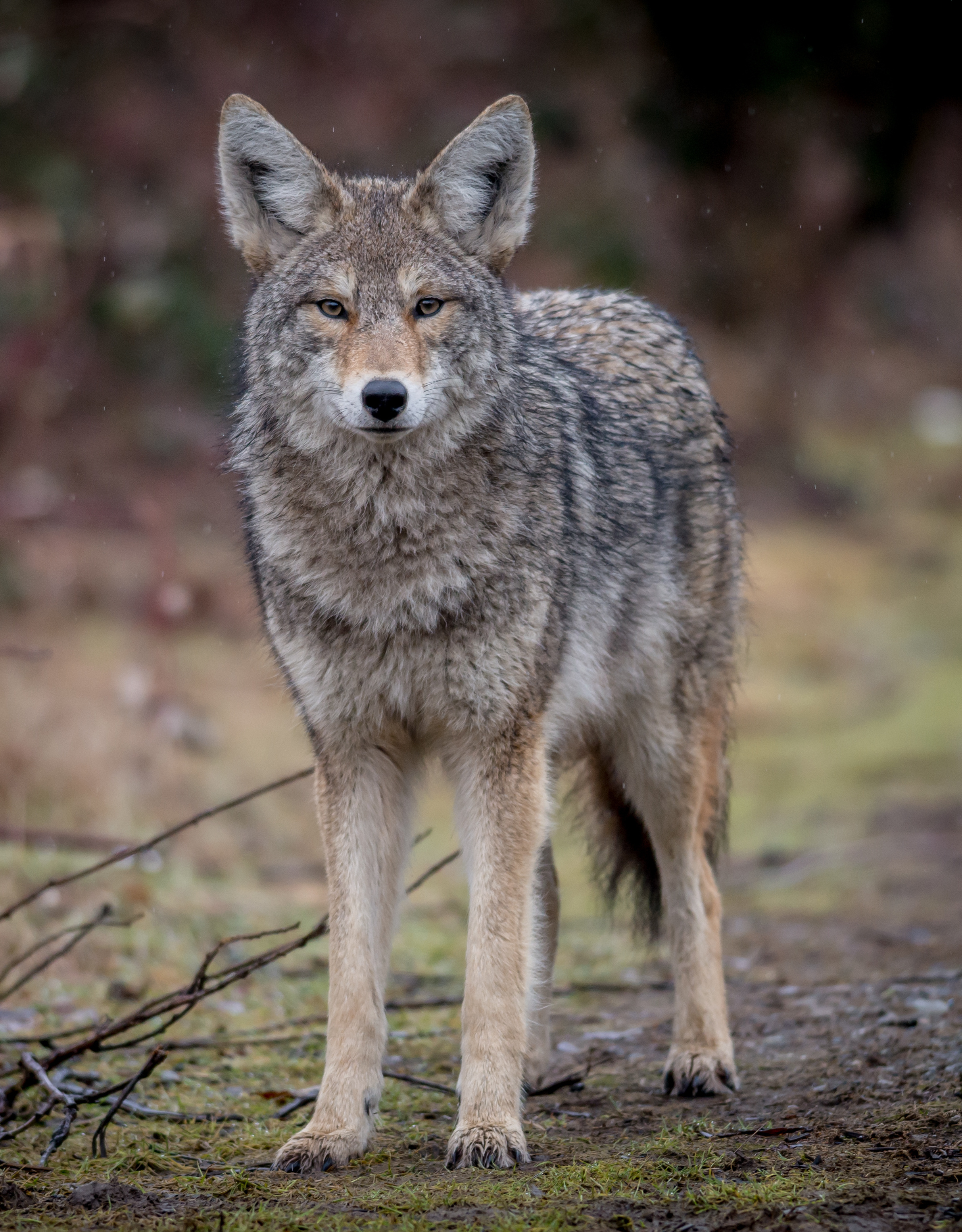 Since this news article ran last fall, we’ve had lots of calls and online service requests about coyotes around town. We thought we’d re-release this article.
Since this news article ran last fall, we’ve had lots of calls and online service requests about coyotes around town. We thought we’d re-release this article.
Have you seen a coyote or two in Mukilteo? You’re not alone. There have been coyote sightings all over Mukilteo: in Japanese and Big Gulches, in residential areas, near Paine Field and at the waterfront. As housing and industrial developments increase and their habitats decrease, coyotes have adapted well as urban survivalists.
Contrary to popular belief, efforts to control or even eliminate coyote populations only disrupt a pack and generally leads to an increase in pups being born as the pack rebuilds.
Coyotes are curious but generally timid animals and tend to run away if challenged. However, a female coyote with pups will protect and defend the den if dogs, children or people in general get too close. The more interactions coyotes have with humans, the less fearful they become.
The City of Mukilteo has received some calls about coyote encounters; we’ve also seen some posts on social media and neighborhood blogs about coyote sightings and missing pets. Coyotes are among many other natural predators, i.e., eagles, racoons, aggressive dogs or other cats that may be the culprit to these missing pets. Our Community Service and Animal Control Officers also deal with many injured or dead pets hit by vehicles.
Many people are concerned about their animals being targeted by coyotes, and that there is an increase in the number of reported sightings. During this time of the year, both adults and adolescent pups are exploring further from the den, leading to more sightings. Females tend to make their dens under fallen trees or digging out dirt to settle in. If you live near one of the gulches, wetlands or large numbers of trees, it is likely that coyotes have made their home near you.
Suggestions to Keep Yourself and Pets Safe from Coyotes
Rangers Peg Bohan and Nik Frenzen have several ideas for residents to keep coyotes from becoming more of a nuisance.
- Keep your dogs and cats inside from dusk to dawn. Domesticated animals have lost some of the survival skills that coyotes practice daily. Don’t keep food outside, coyotes have a keen sense of smell and will likely return after an easy meal.
- Keep your garbage secured. They don’t mind a bit of dumpster diving, especially if it’s easy.
- Do not attempt to approach or “pet” a coyote. They resemble a small German shepherd and can come in a variety of colors. Some ways to identify them is that coyotes have shorter, bushier tails that are carried low, have big ears pointing up and a white “chin strap” on their muzzle.. Adults weigh 20 – 35 pounds with males slightly larger than females.
- Coyotes can and do carry diseases and parasites that can transfer to domestic dogs through various forms of contact. Diseases such as parvo, distemper and rabies can be found in coyote populations. Make sure your pets are up-to-date on their vaccines and limit exposure to coyote droppings.
- Always keep your pets on a leash when hiking, especially in the Gulches. There are coyotes in our gulches and they will act on instinct if their den is threatened. Coyotes have been known to try to lure dogs away from their owners. A well-trained dog on a strong leash can help keep your dog safe.
- If you encounter a coyote, don’t run. Pick up small children and attempt to look bigger by standing up if sitting or stepping on a log. Unless you are holding a child, wave your arms, throw stones and shout to convince the coyote that your are not prey but a potential danger to them.
- Do not leave children unattended in areas where coyotes are frequently seen or heard. Teach them to yell “go away coyote” and inform adults of its presence as soon as possible.
- Build a coyote-proof fence. While they are not naturally good jumpers, they are excellent diggers and an effective fence should be at least 8 inches below the surface or have a galvanized-wire apron that extends out from the fence.
The best method of reducing conflict with coyotes is through education! Coyotes have been living with and among humans for the last 15,000 years and will continue to share our urban environment. While we are fortunate to have these wildlife habitats in our community, learning how to live with and avoid conflict is a better way to resolve this human-wildlife contact. Enjoy your natural spaces and remember wildlife is still wild.
For more information about coyotes, consult the Washington State Department of Fish and Wildlife.





